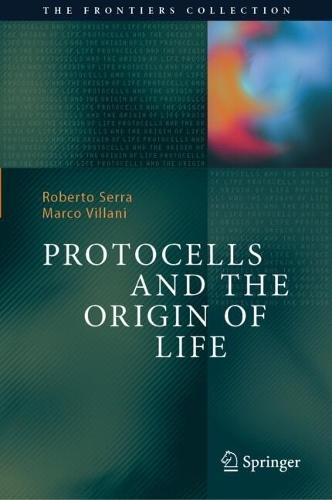Overview
How life can emerge in a lifeless environment is one of the major open scientific challenges. This book pays particular attention to self-organization phenomena that might have led to the appearance of the first protocells, i.e. cell-like structures, much simpler than present-day cells, endowed with some primitive kinds of metabolism and heredity. After a brief description of the known facts and main hypotheses, mathematical and computational models of protocells are discussed: they should complement laboratory experiments, allowing rapid explorations of the dynamical properties of several alternative types of protocell architectures. Given the great uncertainties about the actual origin of life, it seems impossible to provide a detailed and complete reconstruction of the first life forms. It is therefore necessary to identify plausible pathways, highlighting the main physical and chemical processes “towards life” that can take place. Generic models, which are abstract enough to encompass different specific hypotheses, are particularly relevant, as they allow one to identify properties which are common to several different detailed scenarios. They are widely discussed, and a particular case is described in detail, namely that of synchronization between the rate of molecular replication and that of reproduction of the whole protocell, which is a necessary condition for sustainable growth of a population and a prerequisite for further evolution. Using generic models, it is shown that such synchronization spontaneously emerges in successive generations, under very general assumptions. The book also contains extensive descriptions of the emergence of long polymers, of autocatalytic sets and of the interactions between protocells and their environments. The book is not meant only for specialists, but also for scientists working in different fields, as well as for laymen with an interest in science. It requires a basic knowledge of chemistry and biology, and an interest in simulation models.
Full Product Details
Author: Roberto Serra ,
Marco Villani
Publisher: Springer International Publishing AG
Imprint: Springer International Publishing AG
ISBN: 9783031917622
ISBN 10: 3031917626
Pages: 203
Publication Date: 09 October 2025
Audience:
Professional and scholarly
,
Professional & Vocational
Format: Hardback
Publisher's Status: Forthcoming
Availability: Not yet available

This item is yet to be released. You can pre-order this item and we will dispatch it to you upon its release.
Author Information
Roberto Serra, full professor of Complex Systems at the University of Modena and Reggio Emilia (now retired), has previously been the Head of the Environmental Research Centre of the Montedison industrial group, the President of the Italian Association for Artificial Intelligence AI*IA, the Chairman of the Science Board of the European Centre for Living Technology and a fellow of the Institute of Advanced Study of the University of Amsterdam. His main research interests, besides protocells, concern the dynamical modelling of Complex Systems, with applications to gene regulatory networks and cell differentiation, the analysis of their organization and the dynamical systems approach to Artificial Intelligence. He is the author or editor of eleven books and of about 190 papers in international journals and conference proceedings with peer review. Marco Villani is associate professor of Computer Science at the University of Modena and Reggio Emilia and a fellow of the European Centre for Living Technology. His main research interests, besides protocells, concern the identification and analysis of the organization of Complex Systems. In particular, he studies the dynamic modeling of gene regulation systems and socio-technological systems. He has been a member of the board of the Italian Association for Artificial Intelligence (AI*IA) and is currently a member of the Science Board of the European Centre for Living Technology. He is the author or editor of five books and of about 170 papers in international journals and conference proceedings with peer review.



